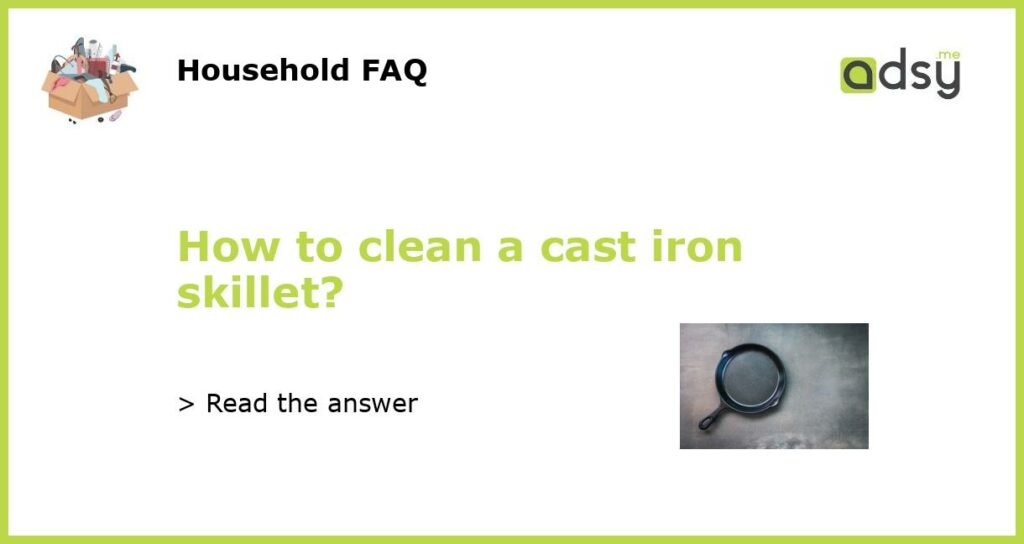Why Cleaning a Cast Iron Skillet is Important
Cooking with a cast iron skillet has many benefits, such as even heat distribution and natural non-stick properties. To maintain these qualities and prolong the lifespan of your skillet, regular cleaning is essential. However, cleaning a cast iron skillet can be daunting for some, as it requires special care to avoid damaging the surface. In this article, we will provide a step-by-step guide on how to properly clean a cast iron skillet.
Gather the Necessary Supplies
Before you start cleaning your cast iron skillet, make sure to gather all the necessary supplies. You will need hot water, a stiff brush or scrubber, mild dish soap, and a clean cloth or paper towels. It’s important to note that harsh cleaning agents, such as bleach or abrasive cleaners, should be avoided as they can damage the seasoning of the skillet.
Step-by-Step Cleaning Process
1. Start by allowing the skillet to cool down: After cooking, allow the cast iron skillet to cool down completely before attempting to clean it. Cleaning a hot skillet can cause the food residue to stick even more.
2. Rinse with hot water: Once the skillet has cooled down, rinse it under hot water to remove any loose food particles. Use a stiff brush or scrubber to gently scrub the surface. Avoid using a metal sponge or abrasive material, as they can scratch the seasoning.
3. Add a small amount of dish soap: If the skillet has stubborn food residue, you can add a small amount of mild dish soap to aid in the cleaning process. Make sure to use a gentle soap and avoid using excessive amounts.
4. Scrub the surface: Gently scrub the surface of the skillet with the brush or scrubber, focusing on areas with stuck-on food. Avoid scrubbing too vigorously, as this can remove the seasoning. If needed, you can also use a nylon scraper to help remove stubborn residue.
5. Rinse and dry thoroughly: Once the skillet is clean, rinse it thoroughly with hot water to remove any soap residue. Then, use a clean cloth or paper towels to dry the skillet completely. It’s crucial to dry the skillet thoroughly to prevent rusting.
Seasoning and Ongoing Maintenance
After cleaning your cast iron skillet, it’s essential to re-season it to maintain its non-stick properties and prevent rusting. To season the skillet:
1. Apply a thin layer of oil: Use a clean cloth or paper towel to apply a thin layer of oil to the entire surface of the skillet, including the handles. Common oils used for seasoning cast iron include vegetable oil, canola oil, and flaxseed oil.
2. Heat the skillet: Place the oiled skillet upside down in an oven preheated to around 350°F (175°C). Let it bake for about an hour to polymerize the oil and create a protective layer.
3. Cool and remove excess oil: After the hour has passed, turn off the oven and let the skillet cool inside. Once cooled, use a clean cloth to remove any excess oil. The skillet is now ready to use.
For ongoing maintenance, it’s important to follow a few best practices:
– Avoid using metal utensils that can scrape the surface of the skillet.
– When using soap, use it sparingly and rinse thoroughly to avoid removing the seasoning.
– Dry the skillet thoroughly after each use to prevent rusting.
– Occasionally reapply a thin layer of oil to maintain the seasoning. This can be done by applying a small amount of oil to a clean cloth and wiping the surface of the skillet.
By following these steps and practicing proper maintenance, you can keep your cast iron skillet in excellent condition for years to come.






